simulate this circuit – Schematic created using CircuitLab
My problem is the ATmega328 is running at 5V. I know I need a bidirectional level shifter. However don't really want to spend much more money on this if I can. I don't want to blow up an expensive amplifier as well. Most expensive IC I've ever bought.
The D2 pin would output 5V but I thought zener diodes are commonly used for over voltage protection. So why I can't just use this diode to clamp it down to 3.3v? I know I need bidirectional level shifting but wouldn't the voltage be clamped to 3.3v either way?
